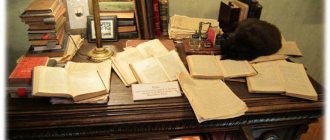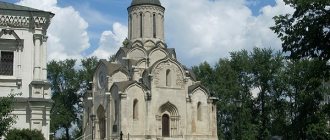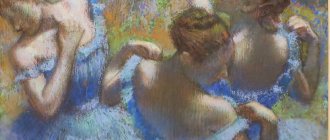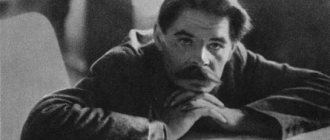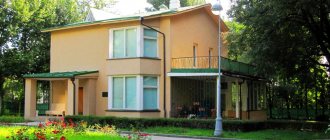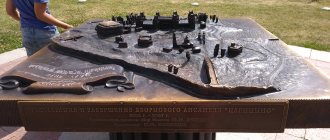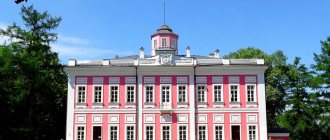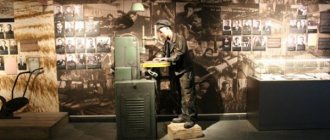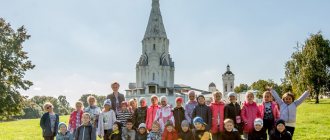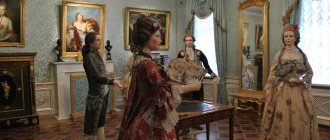The name of Fyodor Mikhailovich Dostoevsky is well known in all countries of the world. He is one of the most widely read classics of Russian literature. There are 8 museums in Russia that tell about the life and work of the writer. One of the best is considered to be the Dostoevsky Museum in Moscow, which today is part of the State Forest Museum.
Fedor Dostoevsky
Dostoevsky Museum in Moscow: exhibition
The collection was based on materials preserved and collected by Fyodor Mikhailovich’s second wife, Anna Grigorievna, who, after the writer’s death, was engaged in the publication and distribution of his works, recording her own memories, compiling a bibliography and catalog of the Dostoevsky Memory Museum, created at the Imperial Russian Historical Museum. The classic's relatives contributed to the replenishment of the exhibition. The memoirs of Dostoevsky’s younger brother, Andrei Mikhailovich, played a huge role in recreating the interior of the rooms.
The tour of the museum exhibition begins with the memorial rooms of the government apartment in which Fyodor was born, grew up, received his first impressions and life skills until 1837, when he turned 16 years old. It was here that his worldview took shape, he saw the sorrows and hardships of the poor patients of the Mariinsky Hospital, was surrounded by ordinary people, which undoubtedly left an imprint on the future creativity, characters and destinies of the heroes of his novels.
Chest-bed for the Dostoevsky children, © Dostoevsky Museum-Apartment on fb
In the dim children's room, separated from the hallway by a plank partition, there is a tiled stove and two forged chests, which were used as beds for Fyodor and his older brother Mikhail. The only window looked out into the nanny's tiny room.
In the “Working Hall”, which simultaneously housed an office, a study corner and a dining room, there are the same chairs, dining and card tables as in the Dostoevsky era. Books are exhibited here, including popular prints of fairy tales, letters, and lithographs. Another memorial room, which served as a living room, is furnished with furniture from the early 19th century. There are family photographs on the walls, on the bookcase there are candelabra that once belonged to Andrei Mikhailovich Dostoevsky, and in the corner there is a guitar.
Children's corner, © Dostoevsky Apartment Museum on fb
“The World of Dostoevsky” is presented in a separate exhibition room, introducing Fyodor Mikhailovich’s personal belongings, his business cards, the original desk where entire chapters of Dostoevsky’s works were written, the sofa he purchased in 1866, and other objects and exhibits.
The overview of the memorial apartment-museum ends with a common corridor with a vaulted ceiling. At the end there is a wide window, symbolizing Dostoevsky’s transition to creative life after moving to St. Petersburg. In front of the opening there is a stand with the writer’s original pen and a sheet of paper with his signature. Various events and concerts are often held in this room. The museum displays a bust of Fyodor Mikhailovich.
Website of the Dostoevsky Museum in Moscow: virtual tour
Entrance arches with figures of lions, © NickolayF
Start of the exercise
On the card table lies the Bible, open to the Book of Job, published in 1815. All the Old Testament stories were read to the children by their beloved mother Maria Fedorovna, who came from a merchant environment and grew up in Borovsk. She was her children's first teacher.
The first textbook for all children was “The One Hundred and Four Sacred Stories.” Fyodor Mikhailovich never parted with a copy of this book and cherished it all his life like a shrine. There are also a few children's toys that the children played with under the supervision of their mother, who was doing needlework. This is what one of the two rooms in Dostoevsky’s apartment-museum looks like.
Museum-apartment of Dostoevsky in Moscow: excursions and programs
There are several thematic excursions available for those interested:
- “House on Bozhedomka”;
- "Moscow childhood";
- "Dostoevsky in Moscow";
- “I came from a Russian and pious family.”
The programs offered by the museum include a series of lectures about the characters of Dostoevsky’s novels, about his childhood and adult life, about his parents, etc. You can visit them by appointment.
Temporary exhibition, © Dostoevsky Apartment Museum on fb
Every year, as part of the “November Evenings”, creative meetings are held dedicated to the birthday of Fyodor Mikhailovich. The organization of round tables for professional researchers of the writer’s work has already become traditional.
Poster of the Dostoevsky Apartment Museum in Moscow (official website)
What young Fedor saw from childhood
New Bozhedomka in the 19th century was not a prestigious place. It was a rather provincial area outside the Boulevard Ring. People who were found suddenly dead on the street, killed in fights or robbery, as well as suicides were brought to God's house. Beggars or very poor patients flocked to such charitable institutions, and long queues formed. For the Dostoevsky brothers, this was a familiar picture. Contrary to the prohibitions of their parents, they communicated with the naked one. In the hospital yard of Bozhedomka, poor, “humiliated and insulted” people began to enter the life of young Fyodor. He was especially shocked in his adolescence by the story of a raped girl. This real episode from life entered his work as a motif of a desecrated and desecrated childhood, trampled into the dirt. So from an early age Fyodor Mikhailovich learned compassion.
History of creation
The museum was opened on the 107th anniversary of the birth of Fyodor Mikhailovich - November 11, 1928. Its creator is Vera Stepanovna Nechaeva (1895-1979), the author of many articles and books about the writer. In the 1940s, the institution became one of the departments of the State Literary Museum. In the 1980s, the exhibition was replenished with restored interiors of the rooms of the Dostoevsky apartment based on descriptions, drawings and diagrams of the writer’s younger brother, Andrei Mikhailovich.
Sofa by F. M. Dostoevsky, © Dostoevsky Museum-Apartment on fb
Moscow hotels near the Dostoevsky Museum
Building
The outbuilding is located on the territory of the Mariinsky Hospital. It was built on Novaya Bozhedomka (since 1954 - Dostoevsky Street) at the expense of the Moscow Board of Trustees of the Institutions of Empress Maria (Fedorovna) and was intended to treat the poor of all ages and genders. The old name of the street is associated with a “wretched house”, demolished in 1771 due to the “breeding ground of the plague”, and a cemetery where tramps and suicides were buried. The vacant lot was purchased in 1803 specifically for the construction of a hospital.
The main building opened in 1806, and the construction of two-story wings, intended to house hospital staff, receive patients and store household supplies, was completed in 1813. The authors of the project are architects I. Gilardi, A Mikhailov, D. Quarenghi. The third floors of the outbuildings were added later, in the middle of the 19th century.
Writer's desk, © Dostoevsky Apartment Museum on fb
Mikhail Andreevich Dostoevsky, the father of the great writer, served as a staff doctor at the hospital. His family was allocated a government apartment on the first floor of the northern wing, where in November 1821 the family’s second son, Fedor, was born. The boy was baptized in the hospital church of Peter and Paul, about which a record was preserved in a special registration book exhibited in the museum. The future writer lived on Bozhedomka until his move to St. Petersburg in 1837. Subsequently, no major restoration work was carried out in the outbuilding, so the internal layout remained unchanged.
Monument to Dostoevsky
In the front yard of the Mariinsky Hospital, the sculpture on a pedestal appeared in 1936. Until that time, the monument stood on Tsvetnoy Boulevard, having ended up there after the revolution by pure chance.
The later famous Soviet sculptor-monumentalist S. Merkurov worked on the figure of Fyodor Mikhailovich. He first thought about its creation back in 1905, but several years passed before the idea was brought to life. To find the desired image, the sculptor sculpted about 20 busts of Dostoevsky. In addition, he had to look for a rich customer, since his own funds were not enough. The monument made of Swedish granite was completed in 1914. There were rumors that the pop idol of the first half of the last century, Alexander Vertinsky, posed for the sculptor.
Monument to Dostoevsky against the backdrop of the Mariinsky Hospital, © tool9-boris
Short description
One of the museums in our country dedicated to the legacy of the great Russian writer Fyodor Mikhailovich Dostoevsky is located in the city of St. Petersburg. The museum complex is relatively young in age - it was opened in the early 70s of the last century. It is located in an old house on Kuznechny Lane at number 5/2 - which has retained its name from ancient times - at the intersection with Dostoevsky Street, former Grebetskaya, and later Yamskaya.
Kuznechny Lane is located in the Central District, most of the houses on it have the status of architectural monuments, which in itself attracts the attention of tourists, the Dostoevskaya metro station is located within walking distance
Prices
The full fee for viewing the permanent exhibition is 200 rubles, the reduced fee is 150 rubles. Discounts are provided for pensioners, schoolchildren over 16 years of age, undergraduate and graduate students of Russian universities, as well as for students of secondary specialized institutions. Those interested can use an audio guide for 150 rubles.
The following have the right of free entry:
- children under 16 years of age;
- disabled people of I and II groups;
- employees of museums of the Russian Federation and members of ICOM;
- children from orphanages and orphans;
- undergraduate and graduate students studying full-time at philological, journalistic, art and theater faculties of Russian universities;
- WWII veterans, liquidators of the Chernobyl accident, combatants.
Everyone, without exception, can visit the F. Dostoevsky Apartment Museum for free on the last Friday of every month.
Exhibition of the first illustrators of the novel “Crime and Punishment”, © Dostoevsky Apartment Museum on fb
Cost of sightseeing tours (+ entrance tickets):
- for groups of up to 15 people (in Russian) - 3000 rubles, for each additional participant (no more than 2 people) - 200 rubles;
- for groups of up to 15 people (in a foreign language) - 4000 rubles, for each additional participant (no more than 2 people) - 300 rubles;
- individual tours - 450 rub. in Russian, 550 rub. - in a foreign language.
For two accompanying school groups (based on 15 participants) admission is free. A more detailed price list can be found on the official website of the Dostoevsky Museum.
Visitors are allowed to take amateur photographs and videos of permanent exhibitions, provided there is no tripod, flash or additional lighting. The use of materials received free of charge in printed and electronic publications is not permitted. At temporary exhibitions, filming is possible only with prior approval from the administration.
The Gospel given by the wives of the Decembrists, © Dostoevsky Apartment Museum on fb
